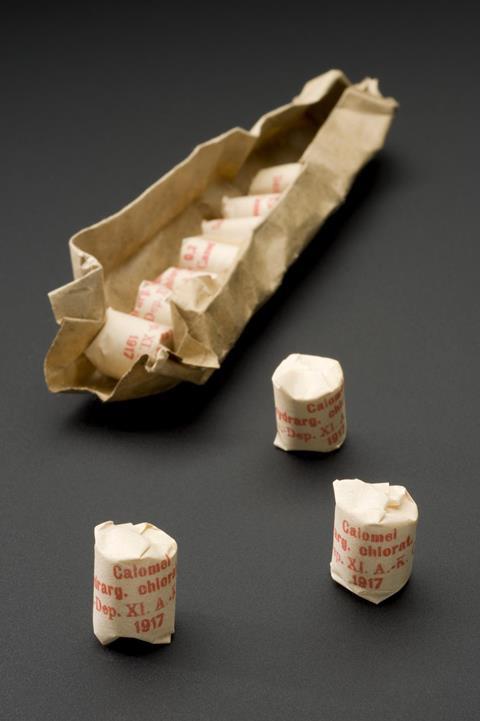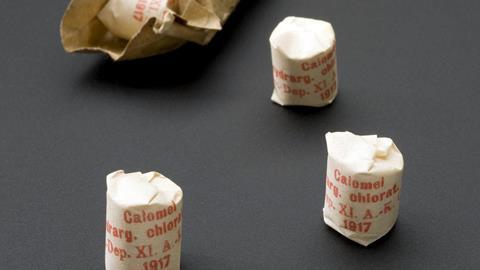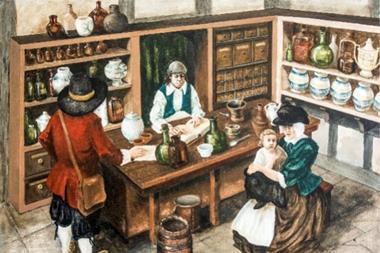Ben Valsler
This week, Michael Freemantle discovers one of the more toxic medical remedies peddled to desperate Victorians…
Michael Freemantle
Do you have spots, freckles or pimples on your face? If so, would you consider using a lotion containing a highly toxic substance to get rid of them? Almost certainly not, I guess. Yet that is exactly what men and women in Britain in the late 18th and early 19th centuries did to enhance their looks.

The toxic substance was mercuric chloride, an inorganic compound more commonly known nowadays as mercury(II) chloride. The compound was one of the components of a skin cream known as Gowland’s lotion. The cream was marketed to men as:
‘an effectual remedy for all scorbutic and herpetic eruptions of the face and skin, from the most trivial to the most disfiguring and inveterate; from the smallest pimple or tetter to the most universally spreading eruptions or ulcerations. For redness of the nose, arms, or other part, and in short for every train and species of evil to which the skin is liable, whether vivid and inflamed, or languid and obdurate.’
The lotion was invented by English apothecary John Gowland who died in 1776. Mercuric chloride was then known as ‘corrosive sublimate’ as it tended to sublime when heated.
Mercuric chloride and its uses have a long history. Arabian alchemist Jabir ibn Hayyan, who is sometimes regarded as the father of early chemistry, discovered the compound around the year 800. He prepared it by the sublimation of mercury with a mixture of sodium chloride and other compounds. It has been claimed that this was the first synthesis of a definite chemical compound that does not occur in nature. In 1716, the German chemist Johann Kunkel showed that the compound could be made more simply by subliming a mixture of mercuric sulfate and sodium chloride. By that time, corrosive sublimate was already being used as a preservative to prevent wood rot.
A major advance in the use of mercuric chloride occurred a few decades later at the Vienna School of Medicine when the Dutch physician Gerard van Swieten introduced a medicine containing the compound as a cure for syphilis. Swieten’s liquor, as it was called, was a dilute solution of corrosive sublimate in brandy that was administered orally. The idea had come from a medical officer serving in the Russian imperial army in Siberia, who had used the concoction to treat soldiers suffering from the venereal disease. The treatment became popular in the late 18th century. Side effects from mercuric chloride poisoning during the treatment were, in all probability, attributed to the disease.

It was not until 1810, however, that the English chemist Humphry Davy determined the chemical composition of mercuric chloride and the related compound mercurous chloride. The latter is also known as mercury(I) chloride or calomel. Davy wrote:
‘Mercury combines with chlorine: when the metal is heated in gas, it burns with a pale red flame, and the substance called corrosive sublimate is formed. When corrosive sublimate is long rubbed with mercury till they are incorporated together, and the mass sublimed, the substance called calomel is formed. I have found by a minute analysis, that the quantity of chlorine in calomel is to that in corrosive sublimate as 1 to 2, the quantity of mercury being the same in both. Calomel is tasteless, corrosive sublimate has an acrid burning taste; calomel is insoluble, corrosive sublimate soluble in water.’
Having apparently tasted the two compounds, he then pointed out that corrosive sublimate is ‘a powerful poison’ and calomel ‘an excellent medicine.’
During the 19th and 20th centuries corrosive sublimate was widely employed not only as a wood preservative and for the treatment for syphilis, but also in photography and as a disinfectant, insecticide, fungicide, and rat poison. Nowadays, it is used as a catalyst for the synthesis of the vinyl chloride needed for the manufacture of PVC and as a reagent in analytical chemistry.
But be warned! If you are planning to use mercuric chloride for whatever purpose, do not forget that it is highly toxic when ingested, inhaled, or absorbed on the skin. The compound corrodes the mucous membranes and can cause nausea, vomiting and diarrhoea. It also damages the kidneys. As little as half a gram can prove fatal.
Ben Valsler
But luckily tasting it didn’t do too much harm to Davy, who lived another 19 years after reporting on its acrid, burning taste. That was Michael Freemantle on corrosive sublimate, or mercuric chloride. Next week, how poison ivy’s active ingredient creates more than just a bad rash…
Kat Arney
Not only is it beautiful, but it’s also long-lasting. Urushi lacquer can withstand temperatures up to 300°C as well as holding off damage by acid, alkali and alcohol.
Ben Valsler
Join Kat Arney to find out more. Until then, get in touch with any comments or suggested compounds – email chemistryworld@rsc.org or tweet @chemistryworld. I’m Ben Valsler, thanks for listening.













No comments yet